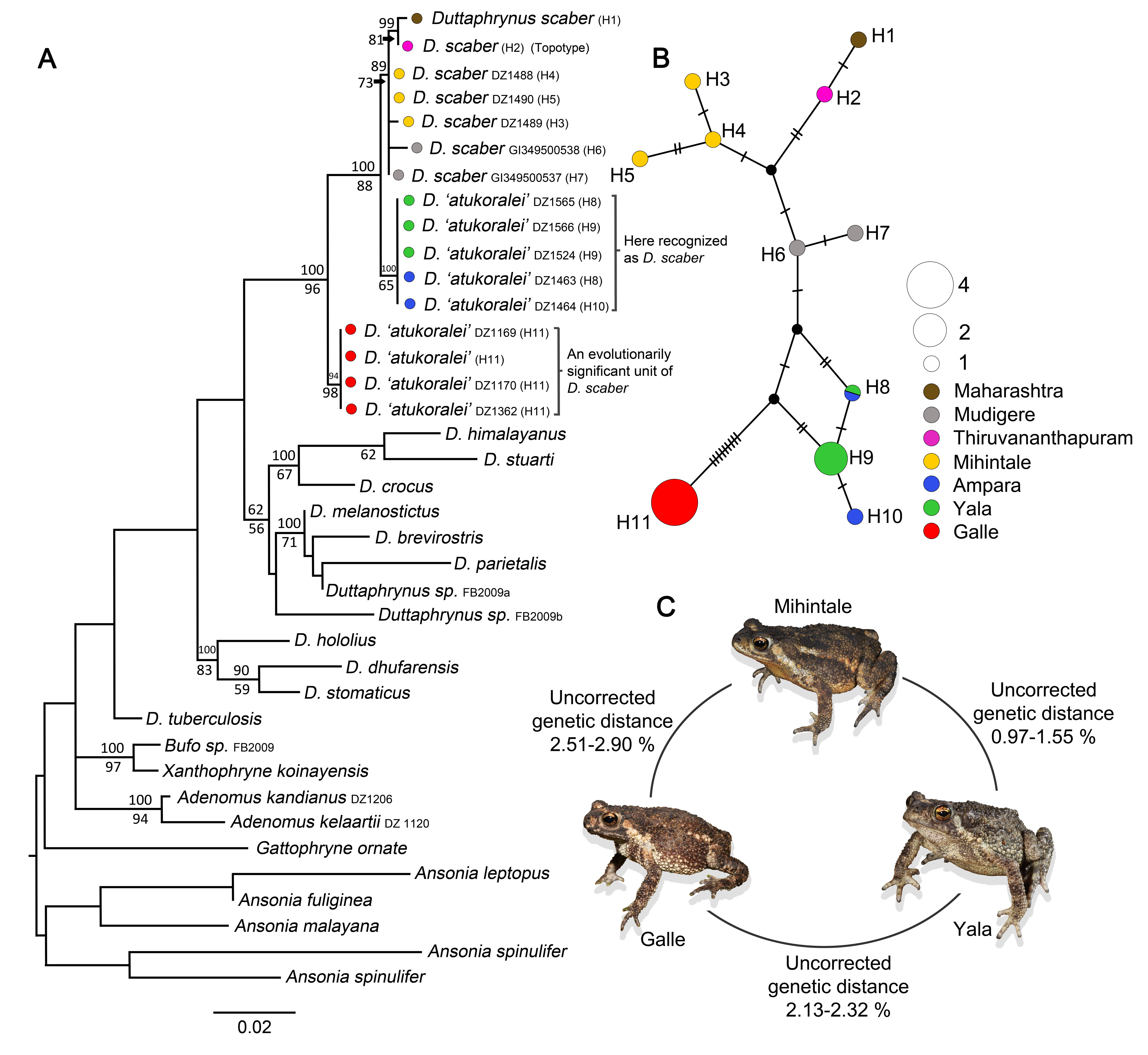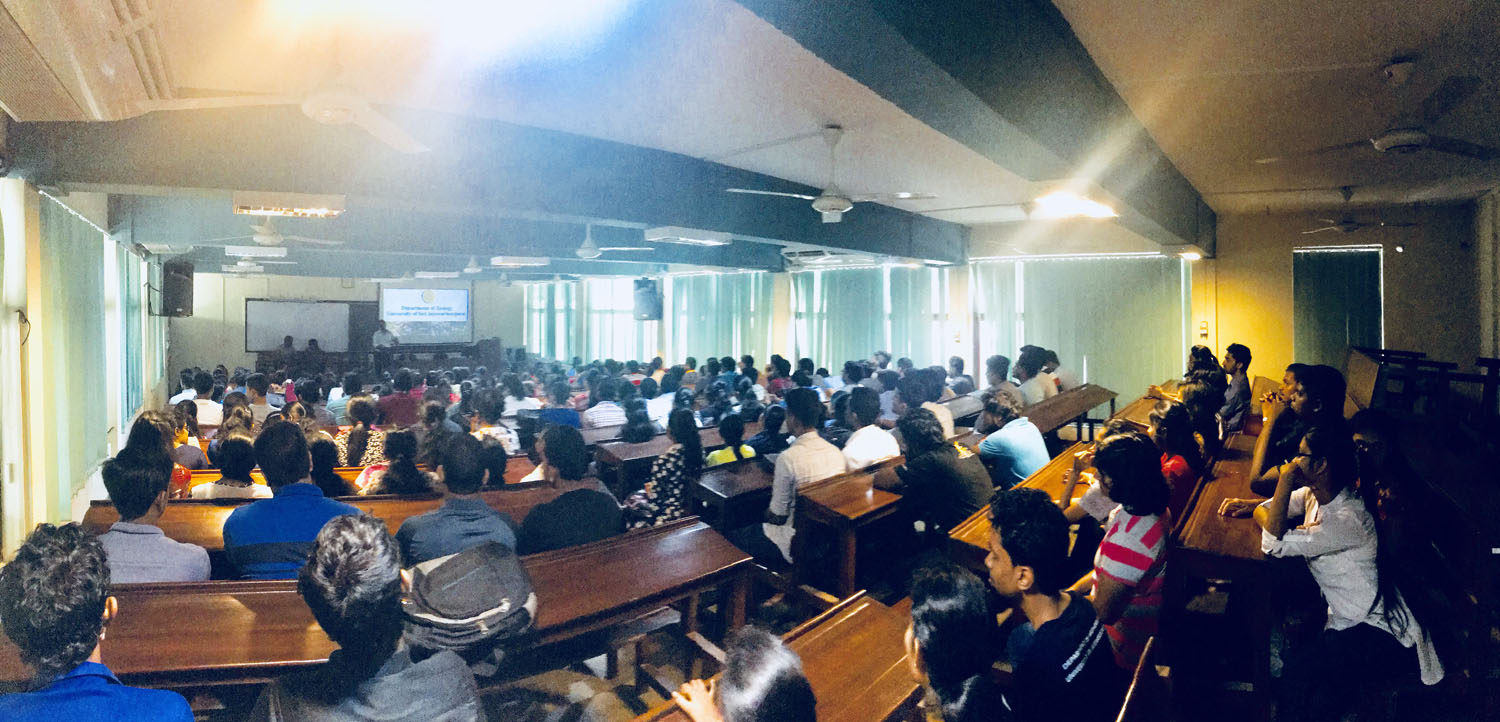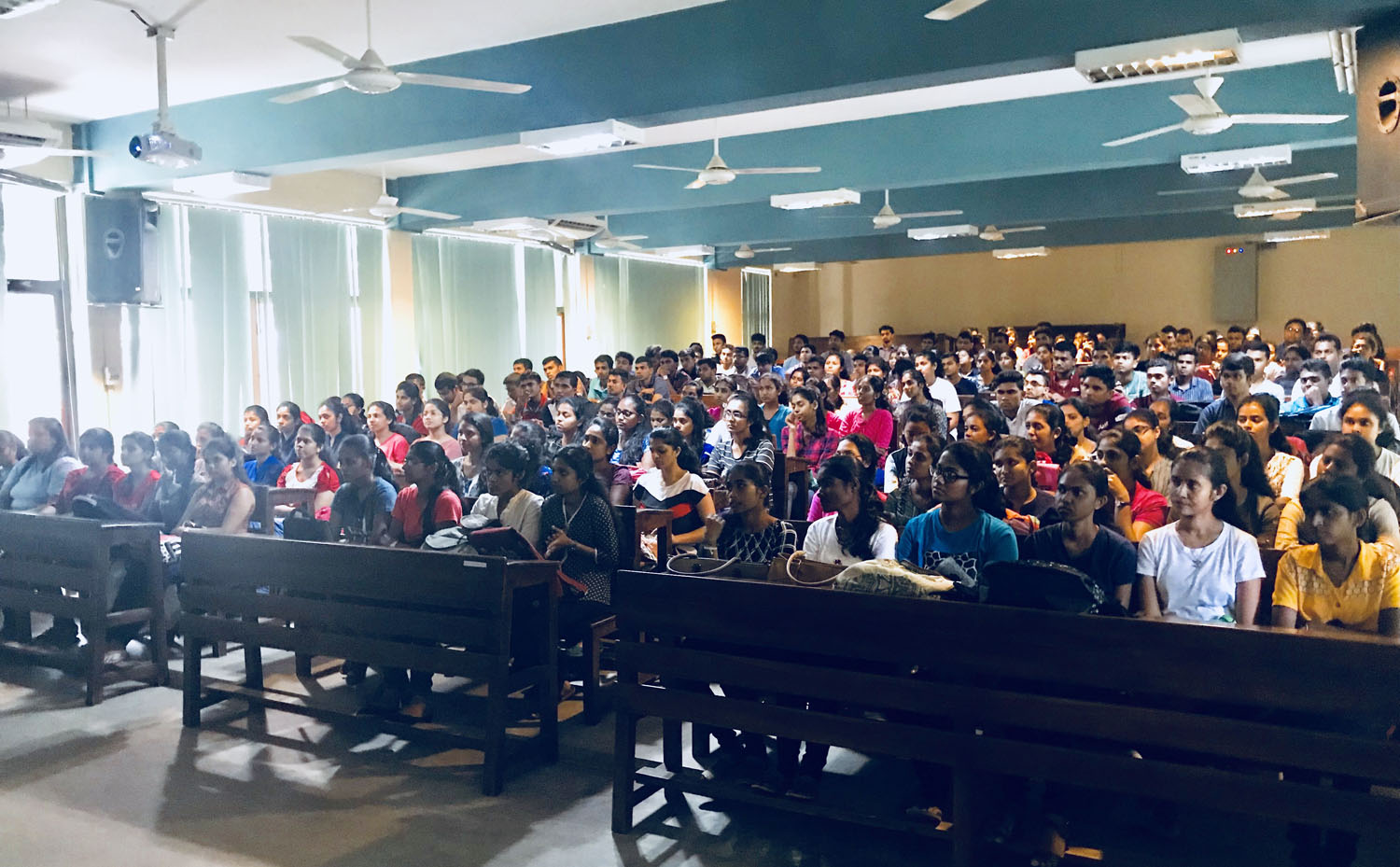Authors: Beneeta Jayawardena, Gayani Senevirathne, Nayana Wijayathilaka, Kanishka Ukuwela, Kelum Manamendra-Arachchi and Madhava Meegaskumbura
Journal: Ceylon Journal of Science
Species boundaries and patterns of gene flow in Dwarf toads, Duttaphrynus scaber and D. atukoralei, were assessed using mitochondrial DNA markers. Samples from four populations in Sri Lanka (Mihintale, Ampara, Yala, Galle) were analyzed for three mitochondrial gene fragments (16S rRNA, COI and Cyt b) along with four Genbank sequences of 16S rRNA from Indian samples (Thiruvananthapuram, Maharashtra, Mudigere). Phylogenetic trees and haplotype networks were generated, and morphology was assessed. Analyses suggest a single species (Duttaphrynus scaber) with three major clades: a widespread clade shared between India and Northern Sri Lanka, an Eastern and Southeastern Sri Lankan clade (previously referred to as D. atukoralei, the validity of which, however, our analysis disputes), and a distinct Southern wet-zone clade from Galle (referred previously to as D. atukoralei). Duttaphrynus atukoralei (topotypes from Yala, Sri Lanka) is genetically too close to (Indian and northern Sri Lankan clade) to be distinguished as a species; these two clades have a genetic distance of 0.95 – 1.55% for the 16S rRNA fragment. The haplotype networks for the 16S rRNA gene suggest incomplete lineage sorting between the Ampara and Yala populations; COI and Cyt b show complete sorting for all populations analyzed, suggesting strong population structure. All analyses suggest substantially restricted gene flow to the southern wet-zone population (Galle). This population also assumes a basal phylogenetic position, suggesting that D. scaber first evolved in southern Sri Lanka’s wet zone and dispersed across the lowland areas of the island and to India. Here, we provisionally recognize this population (Galle) as an evolutionarily significant unit of D. scaber; future analyses using multiple criteria may indicate this to be a new Dwarf toad species. External morphology is largely uninformative as the Yala, Ampara and Galle populations cannot be distinguished from each other; the morphological distinction between Yala, Ampara, Galle versus Mihintale is restricted to only the shape of the parotid glands – slightly oval versus rounded – a minor difference. Both genetic and morphological evidence so far suggest that there is only a single Dwarf toad species in Sri Lanka, which is also shared with India, namely Duttaphrynus scaber; however, with strong population structure, including an evolutionarily significant unit (Southern wet-zone population).





